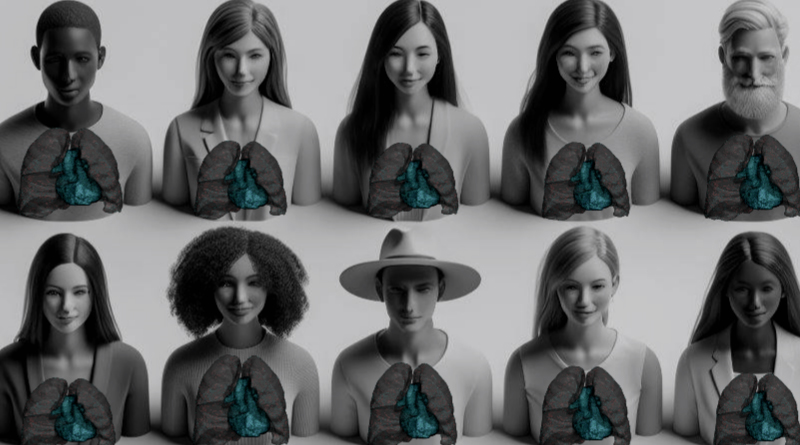MEDICAL DEVICE TESTING AND VIRTUAL PATIENTS
According to the International Consortium of Investigative Journalists’ “Implant Files” investigation, 83,000 deaths and 1.7 million injuries globally have been linked to inadequate medical device testing.
Take Dr Michelle Tarver, who holds a senior post at the US’s Food and Drug Administration (FDA). Despite her medical knowledge and position within the healthcare system, she nearly died during childbirth when a pulse oximeter failed to accurately read her oxygen levels due to her darker skin tone. Her story illustrates a fundamental flaw in medical device development: devices are often not adequately tested across the full spectrum of patients who will ultimately use them.
Economic Cost
Recent analysis by the US National Academies of Sciences, Engineering, and Medicine reveals that a lack of diversity in clinical trials also comes with an enormous economic cost. When drugs and devices aren’t optimised for diverse populations, patients often require additional treatments, experience more complications, and face longer recovery times. This leads to increased healthcare costs, reduced workforce participation, and diminished quality of life. The burden falls disproportionately on underserved communities, further exacerbating existing health inequities.
The scale of this economic impact becomes clearer when examining recent FDA data. From 2014 to 2021, fewer than 20% of FDA-approved drugs had clinical trial data regarding treatment benefits or side effects for black patients. This gap in understanding means that billions are spent annually treating preventable complications and managing suboptimal outcomes in underrepresented populations.
Virtual Patients
Amid this crisis, a revolutionary solution is emerging – virtual patients. Advanced computational techniques can now create digital, diverse, and representative virtual patient populations that capture the full spectrum of human anatomical and physiological variation. This approach, known as in silico trials (ISTs), offers a way to test medical devices across a much broader range of patient characteristics than traditional clinical trials allow.
The initial wave of virtual patient innovation has focused on creating digital twins of individual patients. While this represented an important step forward, achieving true diversity at scale requires a more sophisticated approach.
A pioneering new computational medicine company in the UK, adsilico, has recently been founded to drive the use of synthetic patients for use in ISTs. Recent advances in technology are now enabling the creation of fully synthetic virtual patients that combine characteristics from multiple real patients, which adsilico calls virtual “chimeras”. This novel approach enables the creation of much larger, truly diverse virtual populations that better reflect the full spectrum of future users of a given medical device.
The scale possible with this advanced synthetic patient approach is unprecedented. In the cardiovascular domain alone, a UK academic group processed 40,000 patient MRI images across 50 timepoints of the cardiac cycle, creating 2 million image volumes that serve as the foundation for building diverse virtual synthetic populations. This massive dataset allows for testing of devices across a wide range of anatomical variations, helping identify potential complications in previously underrepresented populations before devices reach real patients.
A Path Forward
The FDA is increasingly recognising the potential of synthetic data approaches. As Dr Tarver emphasises, diversity in device trials isn’t just a regulatory requirement – it’s a crucial opportunity to develop better products that serve wider populations. While digital twins offer some benefits, the future lies in more advanced synthetic data techniques that can generate unlimited, diverse patient populations efficiently and ethically.
These new approaches enable early identification of design flaws that might affect specific populations. They allow systematic exploration of anatomical and physiological variations, ethical testing of high-risk scenarios without putting patients at risk, rapid evaluation of device performance in rare patient populations, and cost-effective testing across multiple demographic groups – all without the risk of direct patient harm.
The evidence is clear: our current approach to medical device testing is not fit for purpose. We cannot continue to accept a system that has led to 83,000 deaths and 1.7 million injuries. We have the technology to do better. Just because current approaches are considered “gold-standard”, it doesn’t mean that they are without limitations. Virtual patients, particularly through advanced approaches that can generate diverse, synthetic populations at scale, offers a path to more inclusive, comprehensive device testing that could save countless lives and prevent untold suffering.
The time has come for device manufacturers, regulators, and healthcare stakeholders to embrace this technological revolution. By combining traditional clinical trials with advanced virtual patient approaches, we can ensure that the next generation of medical devices is truly tested for and effective in all populations they serve. The cost of maintaining the status quo—in both human lives and economic terms—is simply too high to ignore.
 ABOUT THE AUTHORS
ABOUT THE AUTHORS
Sheena Macpherson is CEO of adsilico
Anthony Holmes is the company’s Chief Product Officer.
adsilico is a University of Leeds (UK) spin-out company at the forefront of computational medicine.
By leveraging advanced modelling and simulation techniques, adsilico is working to revolutionize the way medical devices are developed, tested, and brought to market.
![]() adsilico.uk
adsilico.uk
linkedin: adsilico-limited

